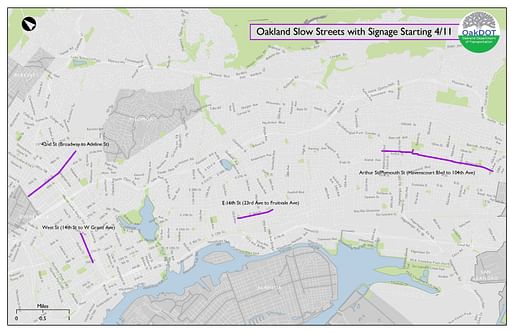

Around the country, as the COVID-19 shut down enters its second month, cities have demonstrated a variety of responses with regards to access to open space as shelter-in-place initiatives have taken hold.
Some cities, like Los Angeles, have opted to shut down parks and hiking trails for fear of facilitating large groups of people gathering in a single place. Others, like Denver, Minneapolis, and Oakland, have embraced the crisis as an opportunity to make more of the city available to pedestrians. With chronically under-sized sidewalks existing as a norm in many cities, some municipalities are moving to close existing vehicle lanes and entire streets to most vehicle use.

In Denver, for example, more than 16 miles of city streets have been optimized for pedestrian use, Denverite reports. In Minneapolis, the figure runs upward of 18 miles of formerly traffic choked arteries that are now peppered with people walking and cycling about. Washington, D.C., The Wall Street Journal reports, has also opted to close certain streets in the city to cars after blooming cherry trees drew crowds so large a few weekends ago that social distancing became all but impossible.
Last week, Oakland Mayor Libby Schaff decided to go further than all others and propose that the city make upwards of 74 miles of existing streets available almost exclusively for pedestrian use. Now, roughly 10% of the city’s streets are open to pedestrians needing to travel to work, stretch their legs, and purchase essentials. The Oakland Slow Streets program is slated to remain in effect until local and regional shelter-in-place directives are lifted.
No Comments
Block this user
Are you sure you want to block this user and hide all related comments throughout the site?
Archinect
This is your first comment on Archinect. Your comment will be visible once approved.